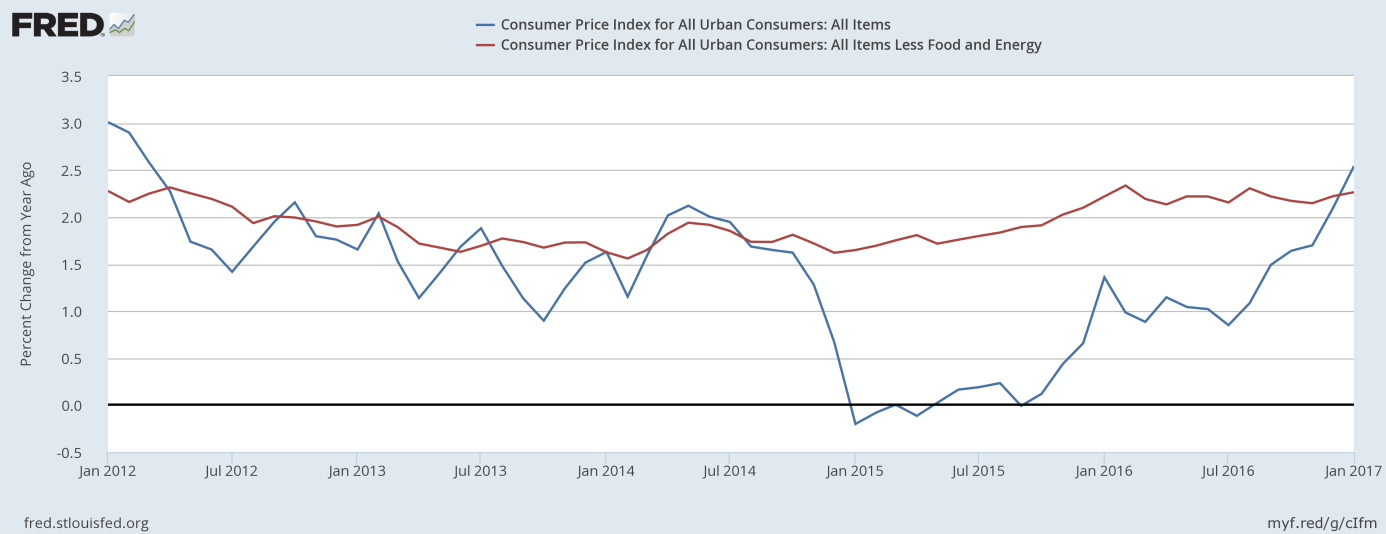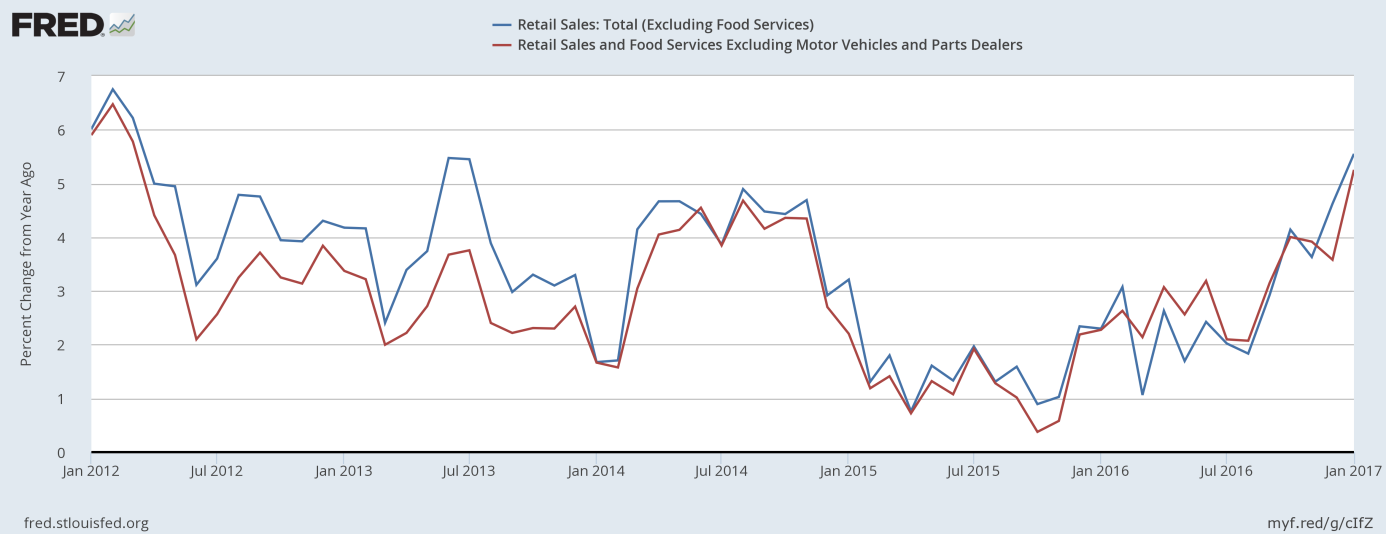Yesterday, there was a massive U.S. economic data dump. What does the release of several reports imply for the gold market?
Wednesday morning was full of U.S. economic reports. First of all, consumer prices increased 0.6 percent last month, following a 0.3 percent rise in December, according to the Bureau of Labor Statistics. The jump was mainly driven by a 4.0 percent surge in energy prices. The core CPI, which excludes food and energy, increased 0.3 percent, following 0.2 percent rise in previous month. On an annual basis, the core CPI jumped 2.3 percent, while the overall CPI rose 2.5 percent, the largest gain since March 2012. As one can see in the chart below, the overall consumer inflation rate really accelerated over the last several months.
Chart 1: CPI (blue line) and core CPI (red line) year-over-year from January 2012 to January 2017.

The inflation rate rose from 0 percent in September 2015 to the current level, which is higher than the Fed’s target. Although the U.S. central bank prefers the PCE Price Index, the jump in CPI is a good reflection of inflationary pressures, or the unfolding reflation. Hence, it is likely to be welcomed by the Fed anyway, which should be bad news for gold bulls.
Second, sales at U.S. retailers increased 0.4 percent last month, according to the U.S. Department of Commerce. The rise followed a 1.0 percent increase in December (revised up from 0.6 percent) and beat expectations. As one can see in the chart below, the annual pace of growth of retail sales accelerated over the last several months. However, the GDPNow model forecast for real GDP growth for the first quarter of 2017 declined from 2.7 to 2.2 after the release of the retail sales report.
Chart 2: Retail sales excluding food services (blue line) and retail and food services excluding motor vehicles and parts dealers (red line) as percent change from year ago, from January 2012 to January 2017.

When it comes to other data, the PPI jumped 0.6 percent in January, marking the biggest gain in wholesale inflation since 2012. Industrial production decreased 0.3 percent in January following a 0.6 percent increase in December, but the Empire State Index surged to 18.7 in February from 6.5 in January, the fastest pace since 2014.
Summing up, the recent U.S. economic data was surprisingly positive, on balance, which initially sent gold prices south, below $1,200. However, the yellow metal ended the session on the upside. It may be the case that investors feared inflation keeping out of control or turned their attention from monetary policy to Trump’s actions. Or the current sentiment in the gold market is simply bullish – since the shiny metal has shrugged off all negative news recently, marking a respectful resilience. But investors should be cautious – the market odds of the Fed hike in March rose from 17.7 percent to 31.0 percent yesterday, which implies that the next month is really a live option for an interest rate increase. The quicker expected pace of the Fed tightening may be an important headwind for the gold market. Stay tuned!
Disclaimer: Please note that the aim of the above analysis is to discuss the likely long-term impact of the featured phenomenon on the price of gold and this analysis does not indicate (nor does it aim to do so) whether gold is likely to move higher or lower in the short- or medium term. In order to determine the latter, many additional factors need to be considered (i.e. sentiment, chart patterns, cycles, indicators, ratios, self-similar patterns and more) and we are taking them into account (and discussing the short- and medium-term outlook) in our trading alerts.
